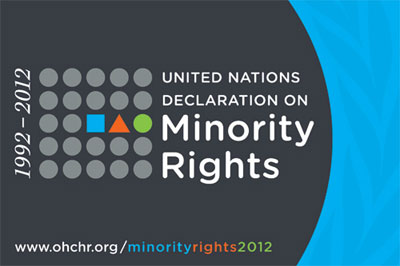
The poorest communities in almost any region tend to be minority communities which have been the targets of long-standing discrimination, exclusion and sometimes violence. This is true of the least developed countries, but also of the most developed.
Twenty years ago, United Nations Member States unanimously adopted the Declaration on the Rights of Persons belonging to National or Ethnic, Religious and Linguistic Minorities. This was an acknowledgment that a gap existed in minority rights protection and this gap still persists today, 20 years later.
Minorities in all regions of the world continue to face serious threats, discrimination and racism, and are frequently excluded from taking part fully in the economic, political and social life of their countries. Today, minority communities face new challenges, including legislation, policies and practices that may unjustly impede or even violate minority rights.
In some regions, certain minorities suffer disproportionately from unequal or restricted access to quality education and inappropriate education strategies.
The situation of minority women and minority children represent important cross-cutting themes.
The Declaration ushered in a new era for minority rights. It sets essential standards for protection and offers guidance to States as they seek to realize the human rights of minorities.
Meaningful progress towards sustainable human development, inclusion and stability can be better achieved through measures that promote and protect human rights and ensure effective participation of minorities in such efforts.
Discrimination and exclusion of national or ethnic, religious and linguistic minorities undermine efforts to achieve poverty reduction, the Millennium Development Goals (MDGs), democratic governance, environmental sustainability and conflict prevention. In contrast, effective participation of minorities enriches decision-making, and helps us plan, implement and monitor sustainable and effective solutions to development challenges.